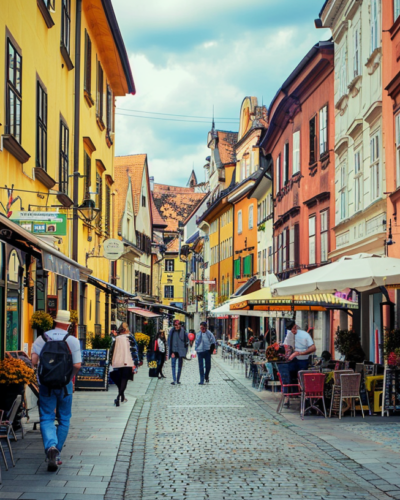Embarking on a journey into Ethiopia’s veiled past, the discovery of Beta Samati unravels the tapestry of the Aksum Empire— a civilization that once rivaled the Romans in its breadth and power. Situated in the heart of northern Ethiopia, Beta Samati offers a vivid snapshot of ancient life, revealing a bustling urban center that was a nexus of trade, culture, and religion.
The Beta Sumati excavation brings to light the empire’s architectural prowess through structures that have stood the test of time, including monumental buildings, intricate artifacts, and one of sub-Saharan Africa’s oldest Christian basilicas. This basilica not only underscores the Aksumite empire’s early adoption of Christianity but also its pivotal role in shaping the religious landscape of the region.
As scholars peel back layers of earth to reveal Beta Samati’s secrets, they’ve uncovered a narrative of cultural exchange, economic prosperity, and spiritual devotion, painting a rich portrait of a society that contributed profoundly to the tapestry of human history. This discovery not only deepens our understanding of Ethiopian heritage but also highlights the interconnectedness of ancient civilizations across continents.
The Awakening of Beta Samati: Rediscovery of an Ancient City
The awakening of Beta Samati heralds a pivotal moment in archaeological discovery, unveiling a city lost to time within the Aksum Empire’s heartlands. This rediscovery not only illuminates the advanced civilization that thrived in ancient Ethiopia but also offers a tangible connection to the past, revealing intricate details of Aksumite life.
From sophisticated urban planning to the spiritual depths of one of Africa’s earliest Christian churches, Beta Samati’s excavation challenges our understanding of history while also showcasing the cultural and economic significance of the Aksum Empire on the global stage. This awakening transcends that just being a triumph of archaeology; it’s more valued as our reconnection with the roots of human civilization.
Architectural Marvels: Building Techniques of the Aksum Empire
The architectural prowess of the Aksum Empire stands as a testament to its sophistication and innovation. Through the ruins of Beta Samati, we gain insights into the building techniques that underscored this civilization’s greatness.
The empire’s structures, characterized by monumental stelae, intricate palaces, and grandiose public buildings, reflect a deep understanding of engineering and artistry. These constructions not only served practical purposes but also symbolized the Aksumites’ religious beliefs and social hierarchy.
The discovery of such architectural marvels offers a tangible connection to the past, showcasing the empire’s contributions to the architectural heritage of humanity and highlighting the ingenuity of ancient African civilizations.
Sacred Grounds: Uncovering One of Africa’s Oldest Churches
The uncovering of one of Africa’s oldest churches within the ancient city of Beta Samati sheds light on a transformative era in the continent’s spiritual landscape. This monumental find not only illustrates the Aksum Empire’s early embrace of Christianity but also its pivotal role in the diffusion of the faith across sub-Saharan Africa.
The church, a beacon of ancient architectural ingenuity and spiritual devotion, offers profound insights into the religious life, practices, and community structure of the time. The discovery near the Tigray Region area reveals the intricate relationship between faith, culture, and society in ancient Ethiopia, highlighting the empire’s significant contribution to the religious and architectural heritage of the world.
Spiritual Crossroads: The Introduction of Christianity to Aksum
The introduction of Christianity to the Aksum Empire represents a pivotal moment not just in the history of Ethiopia but in the broader narrative of early Christian expansion. This spiritual crossroads catalyzed a profound transformation within Aksumite society, intertwining religious evolution with cultural and political shifts.
As one of the earliest states to officially adopt Christianity, Aksum played a critical role in the religion’s early development and spread throughout the Horn of Africa. The discovery of ancient churches particularly in the Tigray Region and like the one at Beta Samati, provides tangible evidence of Christianity’s early presence and influence in the region. This transition not only redefined the spiritual landscape but also the architectural and social frameworks of the Aksumite civilization, marking a significant chapter in the history of Christianity and its global dissemination.
From Ruins to Revelation: The Archaeological Journey
The archaeological journey from the discovery of ruins to the revelation of ancient civilizations’ secrets is a testament to human curiosity and scholarly perseverance. This process begins with the meticulous excavation of sites long buried under the sands of time, where each layer of soil removed unveils artifacts and structures that piece together the story of past societies.
In the case of Beta Samati, archaeologists uncovered a city that was a vibrant hub of the Aksum Empire, providing invaluable insights into the empire’s culture, religion, and architecture. The discovery of ancient churches, residential buildings, and artifacts highlights the significance of archaeological work in bridging the gap between the present and the ancient world, turning ruins into revelations that enrich our understanding of human history.
Connecting Continents: Beta Samati’s Role in Ancient Global Networks
Beta Samati, once a bustling nexus within the Aksum Empire, underscores the ancient world’s interconnectedness, bridging continents through trade, culture, and religion. This archaeological marvel showcases how early civilizations were far more globally connected than often realized, with Beta Samati playing a crucial role in these ancient networks.
For those intrigued by the rich tapestry of human history and eager to explore more ancient cities and architectures, consider visiting sites like Petra in Jordan, Machu Picchu in Peru, or the Roman Colosseum in Rome, Italy. Each offers a unique glimpse into our shared past, revealing the global nature of human civilization.
The Roman Colosseum, also known as the Flavian Amphitheatre, is a giant amphitheater built in Rome under the Flavian emperors. It was constructed between 70 and 80 AD, during the reign of Emperors Vespasian, Titus, and Domitian.
The Colosseum is located just east of Palatine Hill, on the grounds of what was Nero’s Golden House. It is estimated to have held between 50,000 and 80,000 spectators and was used for various events, including gladiator battles, hunts involving wild animals, and executions of prisoners of war and criminals.
The name ‘Colosseum’ likely comes from the colossal bronze statue of Emperor Nero that used to stand nearby. The Colosseum has been a major tourist attraction in Rome and has undergone preservation and restoration efforts since the 19th century.
Discovering the marvels of ancient civilizations is an enriching journey. Archaeological treasure troves like the British Museum in London or the Metropolitan Museum of Art in New York offer extensive collections of artifacts from these sites, providing valuable insights into the ingenuity of ancient societies and connecting us to the diverse tapestry of human history worldwide.
Conclusion
Embark on a voyage of exploration! Join thiscityknows.com in cherishing and honoring UNESCO World Heritage Sites. From ancient ruins to breathtaking natural wonders, these sites encapsulate the narratives of our collective human past and the beauty of our natural world.
Be one with the movement to safeguard and celebrate these treasures for future generations. Start your adventure today by visiting a UNESCO World Heritage Site nearby via thiscityknows.com and spread awareness about the significance of preserving our cultural and natural heritage.
Together, let’s ensure these sites continue to captivate, educate, and inspire for generations to come, where each stone narrates a tale of human triumph and cultural inheritance.









